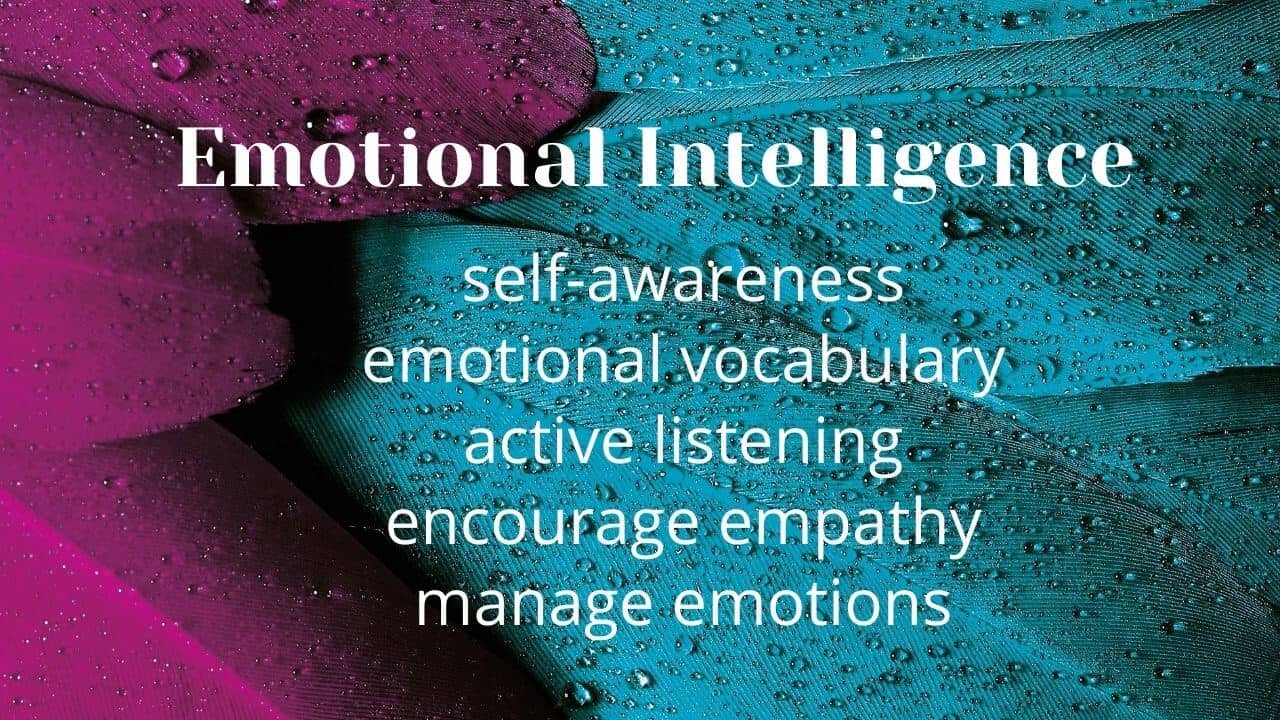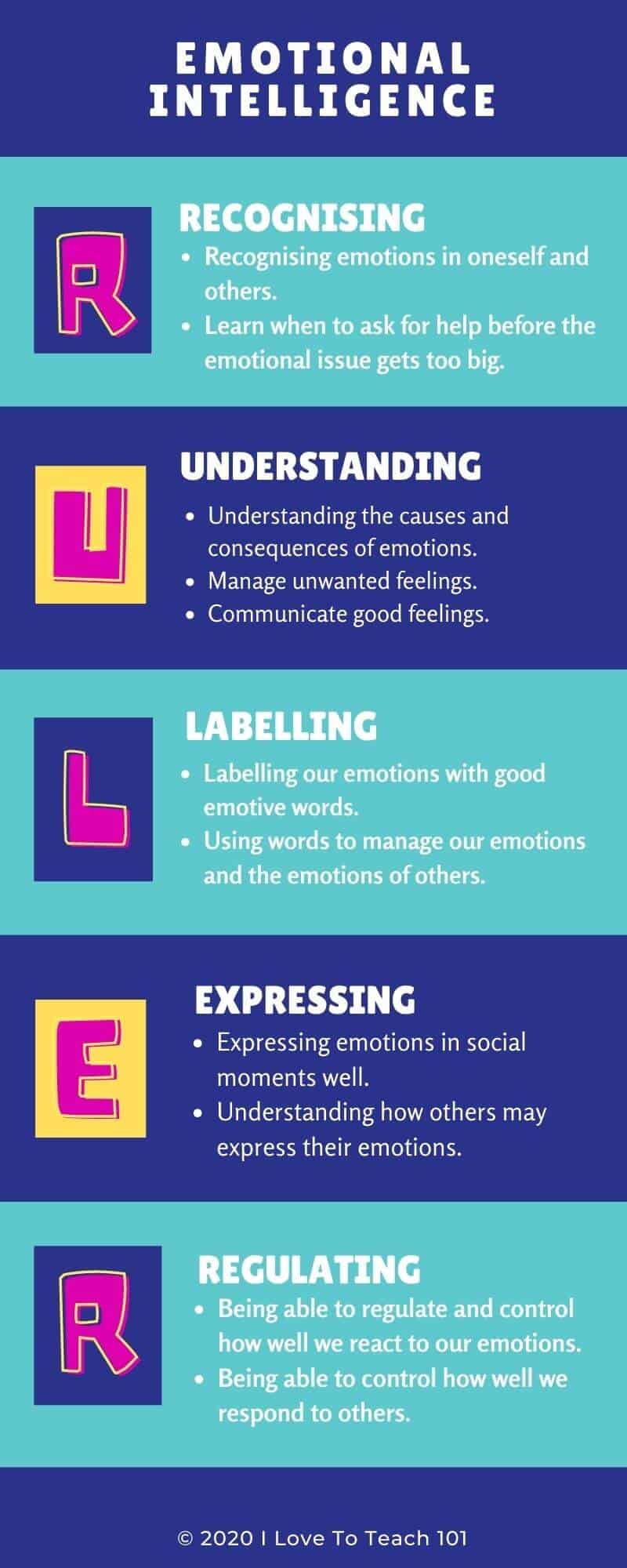Emotional Intelligence: 5 Ways You Can Teach It

As teachers, we want our students to thrive in every aspect of life. A big part of that success relies on emotional intelligence (EI)—the ability to understand, manage, and express emotions effectively. Research shows that EI is more important than IQ in determining lifelong success.
So, how do we teach emotional intelligence in the classroom? Here are five proven strategies to integrate EI into daily learning, plus an extra tip using the RULER framework—a research-backed approach to emotional intelligence education.

What is Emotional Intelligence?
Before diving into teaching strategies, we need to define emotional intelligence.
EI is the ability to recognise, understand, and regulate emotions—not suppress them. It helps individuals communicate effectively, navigate social situations, and build strong relationships.
In today’s world, the need for strong emotional intelligence is greater than ever. Experts agree that students cannot succeed without it. If we don’t prioritise EI in education, we’re failing to equip them for real-life challenges.
So, how can we start fostering emotional intelligence in our students right now? Here are five key strategies to help students develop self-awareness, empathy, and emotional control.
1 – Focus on Self-Awareness
One of the foundational components of emotional intelligence is self-awareness—the ability to recognise and understand one’s emotions.
💡 Classroom Activity: Ask students self-reflective questions and give them time to journal their responses. Incorporating daily reflection activities into lessons helps students develop a deeper awareness of their thoughts and feelings.
📝 Example Questions:
What emotions did I feel today, and why?
How did I react to a challenge?
What could I do differently next time?
Encouraging self-awareness empowers students to take control of their emotions and responses.

2 – Develop Emotional Vocabulary
Language shapes how we understand emotions. Teaching students an emotional vocabulary helps them accurately express their feelings and understand others better.
🎭 Classroom Activity: Create emotion word cards (e.g., frustrated, excited, overwhelmed). Have students role-play the emotion on their card while their classmates guess the feeling.
This game not only builds emotional vocabulary but also strengthens empathy and social awareness.
3 – Practice Active Listening
Active listening is a core social-emotional skill that teaches students to engage meaningfully in conversations. Active listening is the ability to “genuinely follow dialogue, responding to others using your own body language,” and then being able to summarise back what you’ve heard or learned verbally.
👂 Classroom Activity: Play the whisper chain game: One student whispers a message to a classmate, who then passes it on. The last student announces the message aloud. This exercise highlights the importance of listening carefully to avoid miscommunication.
Encouraging students to summarise what they’ve heard in discussions also reinforces active listening skills.
4 – Encourage Empathy
Empathy is at the heart of emotional intelligence. It’s the ability to understand and share the feelings of others.
📖 Classroom Activity: Use narrative-based learning. Research shows that reading fiction improves emotional intelligence, as it allows students to experience different perspectives.
Encourage students to read stories with diverse characters and discuss how they think and feel. Using phrases like “I understand” and “I can see how that feels” also models empathetic communication.

5 – Give Tools for Managing Emotions
Emotional intelligence isn’t just about recognising emotions—it’s about learning to manage them effectively.
🌿 Classroom Activity: Teach simple breathing exercises or encourage students to take a short break when emotions run high.
💡 Example Strategy: Teach students to reframe challenges—instead of seeing mistakes as failures, they become learning opportunities.
Helping students regulate emotions reduces impulsive reactions and promotes emotional resilience.
Extra Tip: Teach Emotional Intelligence Right Now
While it takes extra effort to help students develop strong emotional intelligence, it is one of the most valuable skills we can teach.
According to Carnegie Institute research, 85% of financial success is due to soft skills, including communication, negotiation, and leadership—not technical ability.
When you reflect on why you became a teacher, most of us will say it’s because we want to help students and shape the future. If we ignore emotional intelligence, we’re not fully preparing students for real-world success.

Extra Tool: Use the RULER Program
Want a research-backed method for teaching emotional intelligence? Consider implementing Dr Marc Brackett’s RULER approach, developed at the Yale Center for Emotional Intelligence.
🔹 RULER stands for:
Recognising emotions
Understanding the causes and consequences
Labelling emotions accurately
Expressing emotions appropriately
Regulating emotions effectively
🖥️ Download Your FREE Infographic! Get a free printable infographic to display the RULER framework in your classroom as a daily reminder.
Why Teaching Emotional Intelligence Matters
Developing emotional intelligence is not an extra part of teaching—it’s essential. According to Carnegie Institute research, 85% of financial success is due to soft skills, including communication, negotiation, and leadership—not technical ability.
As teachers, we shape the future. By helping students build emotional intelligence, we equip them with the skills to thrive—academically, socially, and professionally.
📢 Final Thought: Teaching EI might not be in our job description, but great teachers do it anyway—because they know it’s the key to lifelong success.
🚀 Start today! Implement these strategies and help your students build emotional intelligence for a brighter future.
